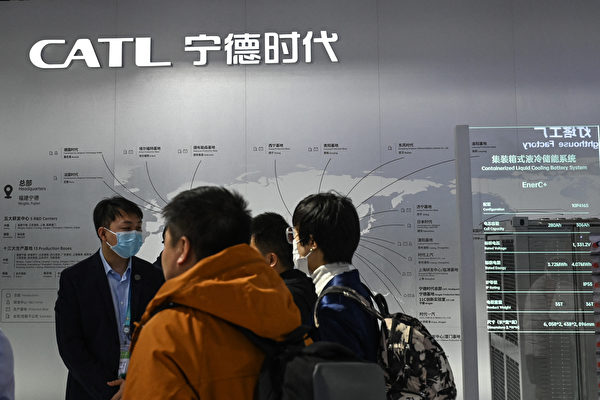China’s lithium battery industry saw a decline in both revenue and net profit in the first half of the year, along with challenges such as overcapacity, underutilization of capacity, high inventory levels, and continuous price drops. Insiders point out that the Chinese lithium battery industry has entered an elimination phase.
According to the latest research report by Dongguan Securities, the revenue of the Chinese lithium battery industry chain in the first half of 2024 reached 432.369 billion yuan, a year-on-year decrease of 13.45%, the first decline in nearly five years for the same period; the net profit attributable to the parent company was 30.676 billion yuan, a decrease of 11.8%.
The Economic Daily recently compiled financial data for the first half of the year of nine power battery companies listed on the A-share and H-share markets, including CATL, EVE Energy, XW Power, Guoxuan High-Tech, EVE Power, Funeng Technology, PENGHUAI Energy, ND Power, and EVE Power Lanjun.
The results show that the combined revenue of these nine listed companies was 265.693 billion yuan, with a total net profit of 25.94 billion yuan. CATL accounted for over 60% of the revenue and nearly 90% of the net profit. The other eight companies combined had a net profit of less than 3 billion yuan.
Notably, CATL’s revenue declined by 11.9% and has been continuously decreasing for three consecutive quarters since the fourth quarter of last year.
A report released by UBS in September titled “Lithium Prices in China Bottoming Out” revealed that CATL suspended its lithium mica business in Jiangxi on September 10th. The report pointed out that the spot price of lithium carbonate has been below CATL’s cost line.
On the evening of September 11th, CATL stated that the company plans to adjust the production arrangement of lithium carbonate in Yichun based on recent market conditions.
An article titled “Lithium Mining Follows the Footsteps of “King Ning”, Is Lithium Battery Clearance Speeding Up?” published on the Huaxia Energy Network on September 28th mentioned that the capacity utilization rate of the Chinese lithium battery industry continues to decline.
In 2022, the overall capacity utilization rate was around 76%, dropping to about 50% in 2023, and in the first half of this year, it fell below 50%.
According to an article by China’s leading industry full-service provider “Mai Zhe”, in 2023, the lithium battery production capacity in China was about 3.3 times the domestic demand and 1.5 times the global demand. The utilization rates vary in different sectors of the lithium battery industry, with power battery effective utilization rates below 60%, energy storage batteries below 50%, and capacities for materials other than membranes below 45%, leading to severe oversupply in low-end materials like lithium iron phosphate.
An article published by the Gaise Automotive on September 28th titled “Sales Volume or Profits, How to Solve the Question of Survival?” pointed out that in addition to “rolling” technology and products, the lithium battery industry is also “rolling” prices. Combined with the continuous decline in lithium carbonate prices, the already meager profits have been further affected.
Liang Rui, Vice President of EVE Energy, a lithium battery company, mentioned that last year lithium carbonate prices dropped by 80%, and lithium battery prices by 50%. However, the situation is worse this year, with the price of energy storage cells falling to 0.3 yuan per watt-hour and power cells to around 0.5 yuan per watt-hour, closely approaching or even lower than cost price.
The article highlighted that the battery materials segment in the industry chain is under the most severe pressure.
In the first half of this year, the leading positive electrode material company, Hunan Yuneng, saw its profits nearly halved, while the leading electrolyte material company, Tianci Materials, saw an 81.56% year-on-year decline in profits, and the negative electrode material leader, Betaray, saw double declines in revenue and profits.
Apart from low capacity utilization rates and declining performance, lithium battery material manufacturers also face a significant challenge – high inventory levels.
During the period of high lithium salt prices, lithium battery companies stockpiled heavily, only to face price declines shortly after. For example, the price of lithium carbonate was above 500,000 yuan per ton in 2022, but has now dropped below 70,000 yuan per ton.
Guotai Junan Securities believes that the lithium battery industry will go through production reduction, shutdowns, and bankruptcies. Recently, Chairman Yang Hongxin of Great Wall Energy openly stated that the lithium battery industry is currently entering an elimination phase.
He said, “This year, energy storage companies may see a potential elimination of 50%; by the end of the year, the number of power battery companies may not exceed 40, and the acceleration of eliminations will continue in the next two years.”
As early as the end of November 2023, the communique of the tenth G20 Lithium Battery Summit warned that the Chinese lithium battery industry has entered a phase of temporary and structural overcapacity.

